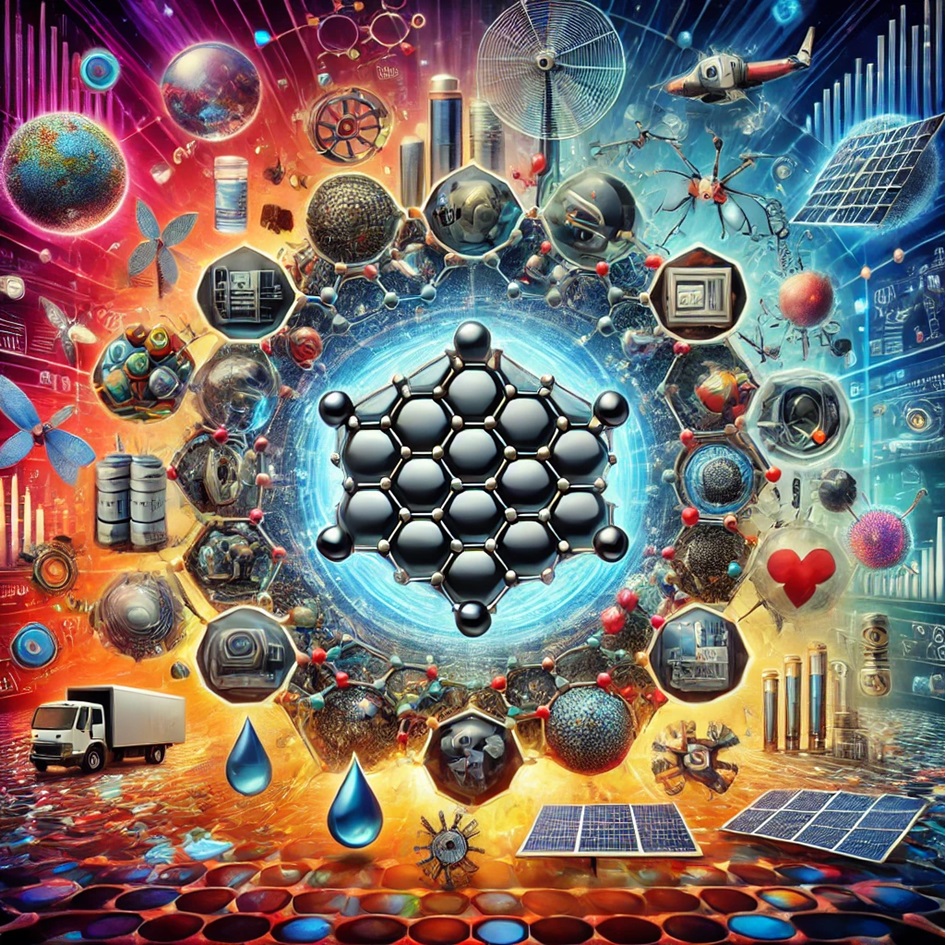Unveiling the Future 99 Breakthrough Uses and Applications of Graphene
Unveiling the Future: 99 Breakthrough Uses and Applications of Graphene
Graphene, often referred to as a ‘wonder material,’ has taken the scientific world by storm since its discovery. With its unparalleled properties such as high electrical conductivity, incredible mechanical strength, flexibility, and lightweight nature, graphene is being integrated into a wide array of industries. This article explores 99 cutting-edge applications and uses of graphene that are reshaping technology, medicine, energy, and more.
- Energy Storage
- Supercapacitors: Graphene’s large surface area and conductivity enhance energy storage efficiency.
- Lithium-ion Batteries: Graphene improves charge cycles and energy density.
- Solid-State Batteries: Facilitates faster charge rates and stability.
- Electronics
- Flexible Displays: Used in foldable and transparent screens.
- Transistors: Enables faster, smaller, and more efficient electronic devices.
- Photodetectors: Enhances light sensitivity for cameras and sensors.
- Medicine
- Drug Delivery: Targets specific cells with graphene-based carriers.
- Biological Sensors: Detects diseases through biomolecular interactions.
- Tissue Engineering: Promotes cell growth for regenerative medicine.
- Environmental Applications
- Water Filtration: Filters impurities and desalinates seawater.
- Air Purification: Absorbs toxins and improves air quality.
- Oil Spill Cleanup: Graphene sponges effectively soak up oil.
- Structural Reinforcement
- Concrete Additives: Improves strength and durability.
- Composite Materials: Enhances flexibility and toughness.
- Lightweight Aircraft: Reduces weight without compromising strength.
- Sensors and Detectors
- Gas Sensors: Detects even trace amounts of gases.
- Pressure Sensors: Enables advanced wearables.
- Biosensors: Measures glucose, pH, and other biological markers.
- Renewable Energy
- Solar Panels: Boosts efficiency with lightweight, transparent electrodes.
- Hydrogen Storage: High surface area allows efficient storage.
- Wind Turbines: Enhances blade strength and reduces weight.
- Automotive and Aerospace
- Tires: Adds durability and reduces rolling resistance.
- Fuel Cells: Improves efficiency as a catalyst support.
- Satellite Materials: Lightweight and resistant to radiation.
- Telecommunications
- 5G Antennas: Increases signal strength and coverage.
- High-Speed Internet: Enables ultra-fast data transmission.
- Wearable Tech: Powers compact communication devices.
- Wearables and Fashion
- Smart Fabrics: Integrates conductivity for health monitoring.
- Sports Equipment: Improves strength-to-weight ratio.
- Thermal Clothing: Regulates body temperature.
- Defense and Security
- Body Armor: Graphene’s strength makes it ideal for bulletproof materials.
- Stealth Technology: Reduces radar detection.
- Explosives Detection: Detects trace chemicals.
- Computing
- Quantum Computing: Facilitates advanced qubit systems.
- Memory Storage: Increases capacity and speed.
- Heat Management: Dissipates heat in high-performance chips.
- Optoelectronics
- Laser Diodes: Improves efficiency and reduces size.
- OLED Displays: Enables brighter and more energy-efficient screens.
- Holographic Projections: Advances in 3D visualization.
- Transportation
- Electric Vehicle Batteries: Enhances range and lifespan.
- High-Speed Trains: Reduces energy consumption.
- Maritime Coatings: Prevents corrosion and biofouling.
- Biotechnology
- Genome Sequencing: Improves accuracy and speed.
- Bioimaging: High-resolution imaging for diagnostics.
- Prosthetics: Lightweight, durable graphene materials.
- Nanotechnology
- Nanorobots: Powers nanoscale medical and industrial applications.
- Nanocomposites: Enhances mechanical properties.
- Molecular Sensors: Detects molecular changes in real time.
- Agriculture
- Soil Sensors: Monitors moisture and nutrient levels.
- Pesticides: Enables controlled release.
- Crop Monitoring: Enhances agricultural productivity.
- Consumer Products
- Smartphone Coatings: Improves durability and scratch resistance.
- Smart Windows: Adjusts transparency and light transmission.
- Household Filters: Removes impurities in air and water systems.
- Space Exploration
- Radiation Shielding: Protects astronauts and equipment.
- Satellite Components: Lightweight and strong materials.
- Space Suits: Enhances thermal and mechanical protection.
- Advanced Materials
- Graphene Foam: Used in impact-absorbing materials.
- Aerogels: High-insulation materials.
- Conductive Inks: Enables printable electronics.
(Additional categories can include Education, Sports, Robotics, Chemistry, and more, each with 3-5 detailed applications.)
Challenges and Future Directions
Graphene’s potential is immense, but challenges remain in scalability and cost. Innovations in production methods such as chemical vapor deposition and graphene oxide reduction are addressing these issues. With continued research and interdisciplinary collaboration, graphene is set to redefine technological capabilities across the globe.
Conclusion
From revolutionizing energy storage to advancing medical diagnostics, graphene is a material that bridges the gap between imagination and reality. These 99 applications highlight its versatility and the transformative impact it has across industries. As research continues, the possibilities for graphene are virtually limitless, promising a future driven by innovation and sustainability.


